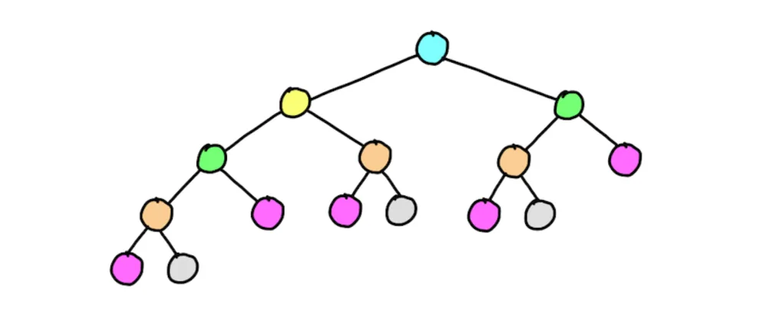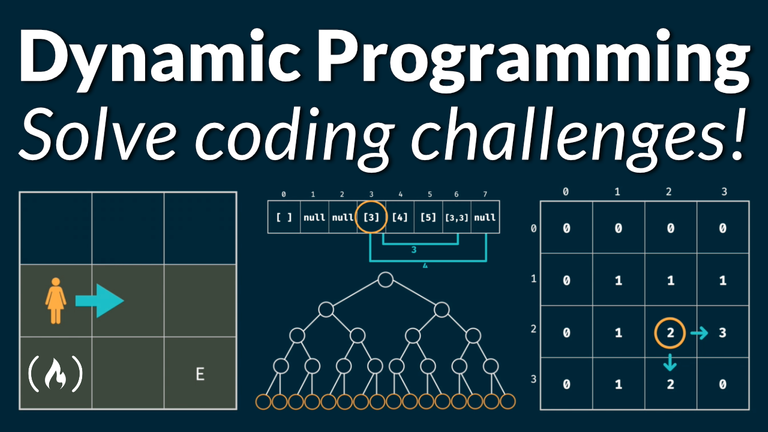How To Ace Dynamic Programming In 5 Simple Steps
Dynamic programming is a technique for solving problems that can be divide into sub-problems. It is an efficient way to solve problems that exhibit the properties of overlap and recursion.
The term “dynamic programming” was first coined by Richard Bellman in the 1950s. He used it to describe the process of solving problems by breaking them down into smaller sub-problems, solving those sub-problems, and then combining the solutions to the sub-problems to obtain a solution to the original problem. The key to using dynamic programming is to identify the sub-problems that can be solved independently, and then combine those solutions to solve the original problem.
A lot of people think that Dynamic Programming is a very difficult topic. However, it is actually not that difficult once you understand the basics.
So, what is Dynamic Programming? Dynamic Programming is a technique for solving problems that can be divided into subproblems. It is usually used for optimization problems.
The 5 steps are as follows:
Understand the Problem
Dynamic programming is a powerful technique for solving problems that can be divided into subproblems. The key to understanding dynamic programming is to first understand the problem you're trying to solve. Once you understand the problem, you can break it down into smaller subproblems and then use dynamic programming to solve those subproblems.
For example, consider the problem of finding the shortest path between two points. This problem can be broken down into smaller subproblems, such as finding the shortest path between two points in a grid. Once you understand how to solve the smaller subproblems, you can use dynamic programming to solve the original problem.
Break the Problem Down into Smaller Subproblems
Dynamic programming is all about breaking down a problem into smaller subproblems. By breaking down the problem into smaller pieces, we can then solve each piece separately and combine the solutions to get the final answer.
For example, let's say you want to calculate the Fibonacci sequence. You could break this problem down into smaller subproblems, such as calculating the Fibonacci sequence for n=1, n=2, n=3, and so on. By solving each of these smaller subproblems, you would then be able to calculate the Fibonacci sequence for any value of n.
Dynamic programming is a powerful technique that can be used to solve a wide variety of problems. If you're stuck on a problem, try breaking it down into smaller subproblems and see if you can solve each piece separately.
Solve the Subproblems
This technique can be applied to a wide variety of problems, from combinatorics to optimization. The key to using dynamic programming is to identify the subproblems that can be solved separately and then combine those solutions to get the overall solution. For example, consider the problem of finding the shortest path between two points. If we divide the problem into smaller subproblems, we can find the shortest path between each pair of points in the smaller subproblems and then combine those paths to get the overall solution.
Dynamic programming can be used to solve a variety of different types of problems, from optimization problems to decision-making problems. If you're stuck on a problem, it's definitely worth trying to break it down into smaller subproblems and solving them.
Combine the Solutions to the Subproblems to Solve the Original Problem
Dynamic programming is a technique for solving problems by breaking them down into smaller subproblems. Once the subproblems are solved, the solutions are then combined to solve the original problem.
This technique can be used to solve a wide variety of problems, from simple arithmetic to complex optimization problems. It is particularly well suited for problems that can be divided into smaller subproblems that can be solved independently.
Optimize the Solution
If you want to optimize the solution, there are a few things you can do. First, make sure you understand the problem. Second, consider all the different factors that could affect the outcome. Third, brainstorm potential solutions. Once you have a few potential solutions, test them out and see which one works best.
Optimizing the solution can be a challenge, but if you take the time to do it right, you can find a solution that works well for you.
I hope you find this blog post helpful. If you have any questions, please feel free to leave a comment below.
Read More on:
Adsbynimbus:
https://www.adsbynimbus.com/tech-blog/dynamic-programming
Freecodecamp:
https://www.freecodecamp.org/news/learn-dynamic-programing-to-solve-coding-challenges



That is an amzing way of thinking to deal with problems
!1UP
Sure it is. Thank you so much
You have received a 1UP from @gwajnberg!
@stem-curator, @vyb-curator
And they will bring !PIZZA 🍕.
Learn more about our delegation service to earn daily rewards. Join the Cartel on Discord.
I gifted $PIZZA slices here:
@curation-cartel(19/20) tipped @danokoroafor (x1)
Learn more at https://hive.pizza!
Congratulations @danokoroafor! You have completed the following achievement on the Hive blockchain And have been rewarded with New badge(s)
Your next target is to reach 9000 upvotes.
You can view your badges on your board and compare yourself to others in the Ranking
If you no longer want to receive notifications, reply to this comment with the word
STOPTo support your work, I also upvoted your post!
Check out the last post from @hivebuzz:
Support the HiveBuzz project. Vote for our proposal!